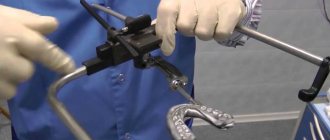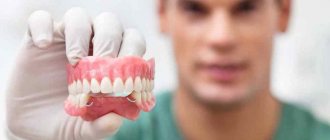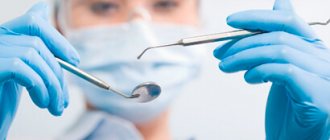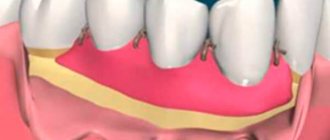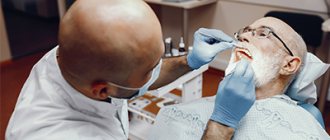Unbearable toothache, sore gums and bad breath require urgent attention from a dentist so as not to aggravate an existing problem.
The initial appointment is carried out by dental therapists. This is a sought-after specialization, since these doctors treat common pathologies of the gums, teeth and oral tissues. A general dentist has a broader range of expertise than a highly specialized orthodontist or surgeon. Such dentists eliminate periodontitis and periodontal disease, relieve pathological changes in the functioning of the salivary glands, treat cheilitis and glossitis (inflammation of the lips and tongue)
A dental therapist not only fills root canals, treats gums or removes tartar. A dentist works to study problems in the maxillofacial area and develop new methods to overcome them.
What diseases does a dentist treat?
At our Dynasty family clinic, dentists practice an individual approach to each patient, depending on the type, origin and dynamics of the disease, and the level of pain threshold.
The main tasks solved by a dentist-therapist:
- Diagnosis and determination of the causes of inflammation, treatment of periodontal disease, periodontitis, periodontoma, gingivitis and periodontitis;
- Treatment and prevention of caries (removal of tartar by the dentist and filling of canals);
- Restoration of mechanical damage to teeth (cracks, chips);
- Elimination of diseases of non-carious origin (pigmentation/erosion or enamel hypoplasia, fluorosis, pulp opening, amelogenesis, root fractures, dentinogenesis, odontogenesis).
At the Dynasty clinic, the dentist-therapist also carries out aesthetic restoration, which allows you to solve all problems within one office, without the involvement of an orthopedist. Without leaving the therapist’s chair, you can restore the front side of the surface of your teeth in two hours using veneers and lumineers (onlays for a “Hollywood smile”) - painlessly, quickly and effectively.
Problems solved by orthopedic dentistry
To understand who an orthopedic dentist is, you need to know more about the field of medicine in which this doctor works. The main tasks that orthopedic dentistry solves are:
- restoration of dentition;
- elimination of chewing function disorders;
- installation of prostheses, as well as regulating and replacement devices;
- diagnosis, prevention and treatment of speech apparatus deficiencies;
- therapy of jaw diseases using specialized devices and structures.
The efforts of specialists working in this field are aimed at eliminating most defects in the dentition and achieving maximum aesthetics of the result (taking into account the functional component).
When should you contact a dentist?
Soviet-era people do not like to visit dentists because they are frightened by the strong association with the “scary drill machine” and severe pain. In medical dentistry, therapists use modern methods and equipment to completely anesthetize the process.
A dental therapist will help in cases where:
- During hygienic cleaning of the oral cavity, bleeding is observed;
- The enamel of the teeth has changed shade;
- Eliminates the cause of the unpleasant odor;
- Damage to the oral mucosa requiring intervention by a therapist;
- There is a constant “aching” pain that intensifies when you press on the tooth;
- Carious cavities appeared in the surface of the teeth and they began to react sharply to cold/hot;
- The gums become swollen and red, or new growths appear on them. The dentist will determine the cause of the inflammation and prescribe treatment;
- Teeth receive mechanical damage or have congenital cosmetic defects;
- Constant “wandering” pain radiating to the ear or temple - the help of a dentist is required immediately.
Useful information: It is recommended to visit a dentist twice a year for a routine examination and teeth cleaning with specialized instruments. Using a laser, the dentist removes mineralized deposits on the surface of the teeth, along with pathogenic bacteria. The procedure even allows you to lighten the enamel a little.
Dental surgeon treatment methods
Surgical dentistry provides a wide range of treatments, which include special methods of surgical influence on the tissues of the oral cavity. The specific choice of treatment method depends on the disease. This section of dentistry practices the following treatment methods:
- bone grafting;
- tooth extraction operations;
- aesthetic surgical operations;
- implantation;
- prosthetics;
- resection of soft tissues.
After surgery, anti-inflammatory, antihistamine, antiprotozoal and antibacterial drugs may be prescribed. If pain is present, anesthetics are indicated.
Cost of dental services
The dentist provides a wide range of services, so prices depend on many factors: the type of disease and the complexity of its treatment; consumables and number of sessions with the dentist.
Basic cost of services:
- Professional cleaning – 170 rubles;
- Treatment of pulpitis and periodontitis – from 550 rubles;
- Elimination of caries – from 300 rubles;
- Chemical whitening of all teeth – 8,000 rubles.
The full list is in the price list on the website.
If you need professional dental help, our clinic offers the services of specialists with many years of experience.
How does an appointment with a dental surgeon take place?
Like any other specialist, a dental surgeon first of all listens to patients’ complaints and collects anamnesis. He must know everything related to the problem that worries the patient. Then it’s time for a visual inspection. The doctor examines the problem area, and he can use tools such as a dental mirror, spatula, probe and others.
Using light tapping, the doctor identifies the area that is causing pain. If we are talking about soft tissues, palpation is performed. The doctor pays attention to swelling, redness, altered areas of the skin and mucous membranes, as well as the patient’s appearance. How the examination will be carried out directly depends on the specific case.
Useful recommendations for oral care from a dentist
The dentist promotes caries prevention and gives basic advice:
- Maintain good hygiene (brush your teeth after eating and floss);
- When brushing, do not forget about your tongue, because germs accumulate on it first;
- Limit your consumption of carbonated and coloring drinks, chips, candies and candies;
- Get a preventive examination at the dentist.
A dental therapist is able to prevent diseases and treat them at an early stage, which will help avoid many problems.
To make an appointment, call the phone numbers listed on the website or use the feedback form.
Features of complex extraction
First, the doctor conducts a visual examination and palpation, studies x-rays and uses them to assess the condition of the bone tissue and periodontal tissue. Only after a thorough examination of all aspects of the clinical picture can a specialist make a final verdict. Based on the same X-ray image, he determines the number of roots, the shape and depth of their occurrence, and assesses the complexity of the work ahead.
Further, the procedure in most cases is carried out according to the following scheme:
- the surgeon makes an incision on the mucosa to provide direct access to the cervical area,
- if it is necessary to separate the teeth, the doctor saws the crown and root system, after which he literally saws it out of the bone tissue in order to remove the tooth in parts,
- then he lowers special forceps to the very edge of the alveolus, clamps the instrument, fixes it and, carefully twisting or rocking the tooth, removes it from the socket,
- the flap of tissue is returned to its place and sutures are applied.
Complex tooth extraction is a full-fledged operation.
As mentioned above, the procedure can be performed both under local anesthesia and with additional deep sedation. And only in exceptional cases is the use of general anesthesia allowed.
Are complications possible after dental treatment, what could they be?
For some time after dental treatment, the patient may be bothered by a slight aching pain, which usually occurs during the process of chewing food. In this case, there is no need to sound the alarm, such pain is not a complication: it is observed after treatment of deep caries due to the pressure of the filling on the pulp and will go away in a few days without taking any medications, on its own.
But if the tooth hurts severely and the discomfort does not disappear after taking painkillers, you should go to the doctor urgently! This symptom indicates the preservation and continuation of the active development of the inflammatory process in the tooth. Usually the cause of such a complication is poor quality of primary dental treatment. At Uni Dent dentistry in St. Petersburg you can undergo dental treatment of any complexity.
Our clinic offers patients modern dental treatment methods, innovative equipment, sensitive and experienced staff, and doctors who regularly improve their qualifications abroad. Trust the health of your teeth to professionals - come to Uni Dent dentistry in St. Petersburg!
Pediatric dentistry: how an orthodontist treats
A pediatric orthodontist chooses a treatment method only after a complete examination of the patient. When making a decision, the doctor takes into account:
- child's age;
- type of bite - milk, permanent, replaceable;
- orthodontic pathology - anomalies of teeth, dentition, bite.
The most popular correction methods:
- myogymnastics (myotherapy) - a course of special exercises aimed at strengthening the muscles of the maxillofacial area;
- surgical method - necessary to eliminate pronounced deformations of the bite, jaw rows, dental sequences;
- hardware therapy - the use of fixed and removable structures to correct the bite or individual units.
Which colleagues does the prosthetist interact with?
The implementation of any of the techniques used by an orthopedic dentist is impossible without close interaction with other specialists. An integrated approach to restoration and prosthetics is carried out with the contribution of the following doctors to the common cause:
- Dentist-therapist
. Performs preparatory work prior to prosthetics - carries out sanitation of the oral cavity, removes dental deposits (plaque and tartar), and treats diseases of the mucous membrane and periodontium. - Dentist-surgeon
. At the preparation stage, it removes teeth and non-viable roots in cases where the problem cannot be treated therapeutically. At the stage of prosthetics, implants are implanted into the jaw, on which the orthopedist later carries out the final stage of restoration of the dentition. - Dental Technician
. This specialist uses impressions made by an orthopedist to make the necessary prosthetics and orthopedic structures. If necessary, after fitting the patient, he also adjusts the created prostheses, correcting possible shortcomings that cause discomfort to the patient. - Anesthesiologist (or resuscitator)
. Interaction with this colleague is necessary when, with complete edentia, it is necessary to place many implants on both jaws. This procedure may require general rather than local anesthesia. - Dentist-orthodontist
. If prosthetics are to be installed, and the patient has problems with the bite, then the treatment plan includes the need to contact this particular specialist. After complete treatment, you can begin preparing and installing prostheses.
When planning prosthetics, be prepared for the fact that a comprehensive solution to the problem will be required. This means that in addition to the orthopedic dentist, you will have to visit a number of highly specialized specialists.
Symptoms that may indicate the need for dental treatment
If you are worried about tooth pain, even if it is mild and appears from time to time, this is a clear reason to see a doctor and undergo professional dental treatment. The sooner you contact a specialist, the less likely it is that the treatment will be complex, protracted and painful. The following symptoms may also indicate the need for urgent dental treatment: The appearance of dental hypersensitivity; sharp, unpleasant odor from the mouth (if hygienic procedures for caring for the oral cavity are carried out on an ongoing basis); bleeding, swelling of gum tissue; problems with opening/closing the mouth; the appearance of spots, irregularities on the dental surfaces, and changes in the shade of tooth enamel. Remember that a timely visit to the dentist for tooth treatment is the only way to save the tooth. And your teeth are better than any, the most modern dentures!
Read also
What are clasp dentures for teeth and which ones are better?
Dental restoration using clasp dentures is one of the most popular and budget methods.
Removable dentures: which ones are better?
Dental restoration using removable dentures can be an alternative to fixed structures.
Case 3. An instrument broke in the canal
We often come across cases when patients come to us who, during treatment in other clinics, have had a broken instrument in the root canal.
But the patient has no idea about this, since the attending physician himself did not notice it. When treating inflammation, in the absence of a microscope at hand, this remaining instrument interferes with the full treatment of the root canal. And the doctor, without seeing this instrument, cannot remove it, making full root canal treatment possible. Therefore, the patient is recommended to have the tooth removed. But is it necessary to remove the tooth in this case? - No.
How to do it right:
Contact a clinic that has a dental microscope in its arsenal.
Under high magnification, the doctor will be able to see the problematic root canal and see the remaining fragment of the instrument. Then carefully remove it, treat the root canal and eliminate inflammation. This allows the patient to save the tooth without having to remove it. Effective treatment of the above situations has become possible thanks to the use of dental microscopes in dental practice. Don’t skimp on your dental health; go to clinics that are equipped with microscopic treatment technologies.
Features of the dental treatment process under a crown
Installing a crown does not guarantee 100% protection of the tooth from caries and other dental diseases. Some time after the installation of a prosthetic structure in the patient’s oral cavity, phenomena such as subsidence of the gums and exposure of the cervical part of the tooth may be observed. These phenomena create favorable conditions for the development of caries and the risks of developing carious lesions are especially high due to insufficient oral hygiene. Under the crown, not only caries can develop, but also pulpitis and periodontitis, and therefore if you have pain in a tooth on which a crown has been placed, you need to seek professional treatment urgently!
If the diagnosis reveals caries or an inflammatory process under the crown, tooth treatment will involve removing the orthopedic structure and carrying out all the necessary manipulations to stop the inflammation and save the tooth.
Note that caries under the crown often appears because errors were made during the manufacture of the prosthetic structure or during its installation. If the crown is adjacent to natural tissues with insufficient density, pathogenic microflora can easily penetrate under it. For this reason, it is important to choose a good dental clinic for prosthetics, which employs experienced and competent specialists.

